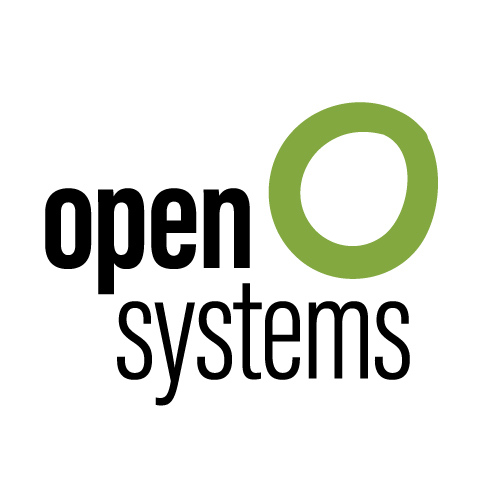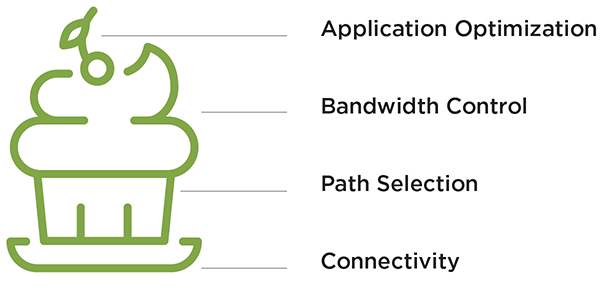
Application Optimization – The Cherry on Top of the SD-WAN Cake


Application Optimization is part of Open Systems’ Secure SD-WAN offering. Let’s take a look at where it fits into the SD-WAN stack and why it is important.
- Plate
At the base, we have the access lines which connect all your locations and form the fundamental backbone of your WAN. - Cake
Path selection allows traffic load-balancing, with all available access lines, to choose the best line for each application. Through various failover profiles, it authorizes the best possible line to use for your business-critical applications. - Icing
Bandwidth control makes sure that even if your lines get congested because the applications use more than the available bandwidth, your business-critical applications are still protected and get the required bandwidth. - Cherry on top
At the very top is Application Optimization. This reduces the bandwidth requirements for your applications and overcomes the effects of high latency or packet loss, optimizing application performance.
Application Optimization Functionalities
The Application Optimization service is designed to improve application performance within your network. There are several methods to optimize traffic if the goal is to reduce the application bandwidth or improve performance if lines have high latency or suffer from packet loss.
Compression
Application optimization reduces the bandwidth needed in your network by applying compression. A client requesting a file from a server within the network triggers lossless compression algorithms to reduce the file size which results in less data being transferred across the network than with the original file. On the remote edge device, the data is de-compressed, and the original file is delivered to the client.
Caching (Block-level Deduplication)
Caching reduces the required bandwidth between your locations. If a client downloads a file from a server within your WAN, Application Optimization caches the transferred data between the two edge devices. When a second client requests the same data, instead of moving the whole file again, the engine transfers a block reference to the respective data in the cache. The client then uses this reference to do the cache lookup to find the requested file and retrieve it in original form. It doesn’t matter how the various clients access the file, e.g., via email, HTTP, FTP or Samba, because the byte sequence is cached and not the file itself. Whenever the engine sees the same byte sequence, it can replace it by a reference to the block where that byte sequence is stored.
Caching also considers file updates as part of it remains the same, but some of it changed. In that case, Application Optimization would still transfer a block reference to the data that was not changed and transfer the part that did change. That way, the client will always receive an up-to-date version of the file, and the change is then also stored in the cache. Application Optimization caching can drastically reduce the amount of data that is transferred between the edge devices.
TCP Optimization
Whenever a client establishes a connection to a server, the engine will intercept the session and establish a new session between the Open Systems edge devices as well as from the edge device to the server. Open Systems controls the TCP connection between the two edge devices; Application Optimization ensures that it uses a TCP algorithm designed to provide optimal performance, even when the line suffers from packet loss or if there is high latency. By doing optimization at the TCP level, it can additionally provide optimization for encrypted applications where other optimization options would not be available.
Protocol-specific Optimization
For applications based on HTTP or CIFS, it is possible to apply protocol-specific optimization. The engine optimizes the traffic by either reducing the required bandwidth for HTTP traffic or reducing latency effects for the CIFS protocol.
Why?
HTTP requests usually come with a large header. Across different requests, these headers tend to be very similar. Application Optimization replaces large headers with smaller representations.
The CIFS protocol is very chatty. To accelerate that application, Application Optimization reduces back-and-forth communication by using read-ahead and write-behind .
Application Optimization for a Performant SD-WAN
The second generation of Application Optimization was released recently. It was developed in-house and fully integrated into our SD-WAN technology stack. We recommend applying Application Optimization to applications needing to be accelerated or if bandwidth needs to be reduced drastically. The Open Systems Customer Portal shows, in real-time, the reduction in bandwidth over a short period.
Lightboard Lesson Video
Watch the Lightboard Lesson video and learn how to boost the application performance within your SD-WAN.
Leave Complexity
Behind
To learn how Open Systems SASE Experience can benefit your organization, talk to a specialist today.
Contact Us



